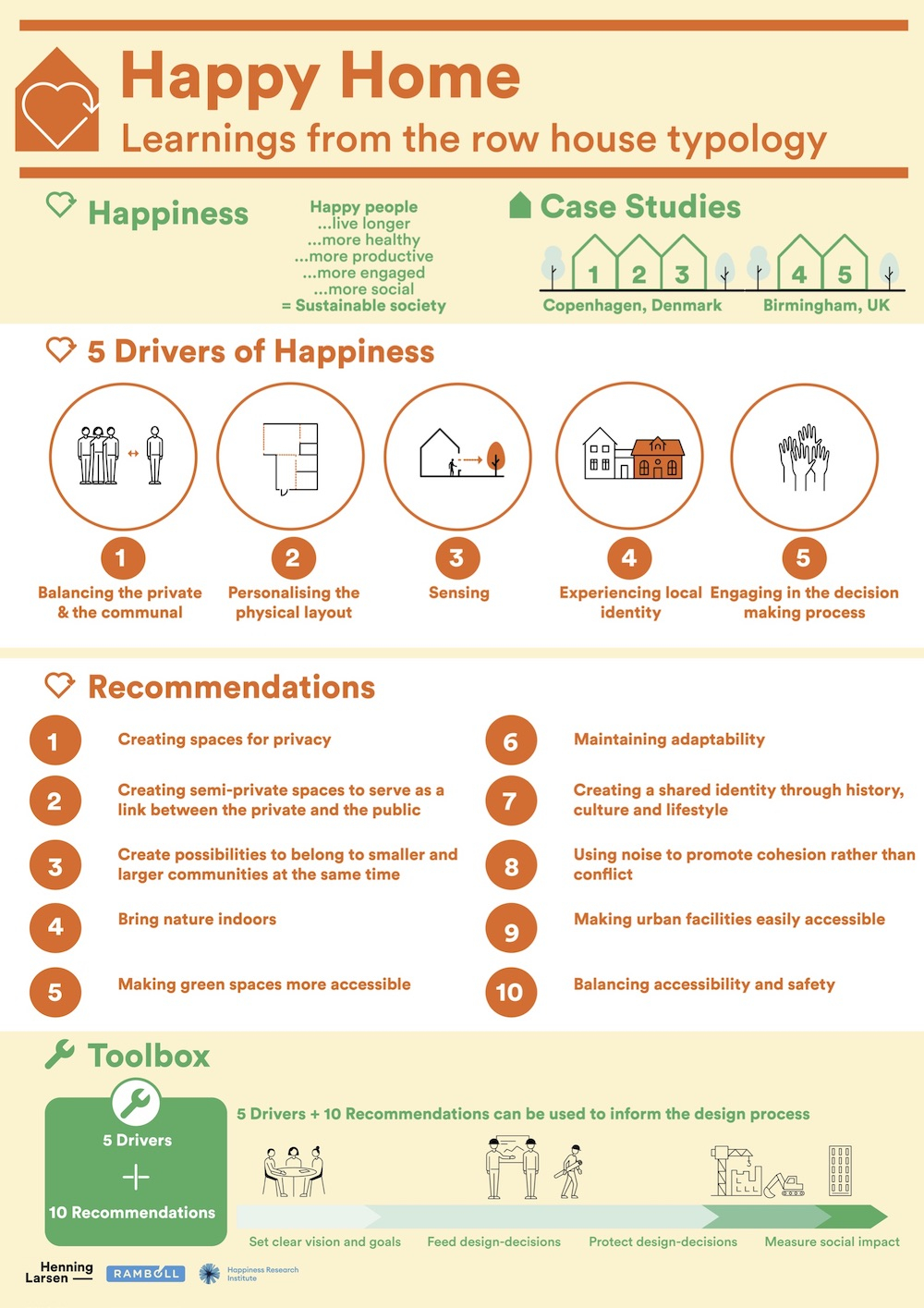Residential / Healthy Cities
Healthy City Design 2022
Happy Home: Learnings from the Row House typology
By Gorana Shepherd, Adam Selvey, Ofri Earon and Meik Wiking | 21 Dec 2022 | 0
The Happy Home report has been developed in the wake of the Happiness Research Institute’s GoodHome report, which found that 15 per cent of happiness is correlated with our homes. The Happy Home research investigates and identifies key drivers and tools for designing for happiness at individual and community levels, building on previous research.
Abstract
The project investigated five different Row House communities in Denmark and the UK. Across these five case studies, we conducted semi-structured face-to-face interviews with a wide range of residents and exploratory workshops with key stakeholders from Row House Communities.
Key drivers and recommendations: Based on in-depth interviews, the key drivers of happiness are drawn from the five case studies that had the most positive impact on residents’ wellbeing. The key drivers to happiness: balancing the private and the communal; personalising the physical layout; sensing nature; experiencing local identity; and engaging in the decision-making process.
The five key drivers guided the development of ten spatial and policy recommendations for public and private developers, architects, and communities to help them design happier homes and neighbourhoods. The findings from the five case studies were used to develop the ten recommendations. The ten recommendations include: creating spaces for privacy; create semi-private spaces to serve as a link between the private and the public; create possibilities to belong to smaller and larger communities at the same time; bring nature indoors; making green spaces more accessible; maintaining adaptability; creating a shared identity through history, culture or lifestyle; using noise to promote cohesion rather than conflict; making urban facilities easily accessible; and balancing accessibility and safety.
Implementation and wider implications: The five drivers and ten recommendations can be used as a toolbox to create happier homes and neighbourhoods. These recommendations can be embedded throughout a home’s lifecycle, including incorporating the resident’s perspective in the design process to increase the likelihood of them experiencing positive emotions in their homes.
The research reinforced the importance of thinking beyond the physical boundaries of our home. The concept of a “complete neighbourhood” provides communities with sustainable and equitable access to meet their daily needs. Can this concept, however, bring happiness? According to the findings of this study, the answer is yes.
By understanding that a ‘home’ includes the wider neighbourhood. A home, like the street, should be considered as part of a larger ecosystem that can contribute to delivering sustainability and happiness.
Organisations involved

